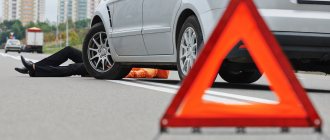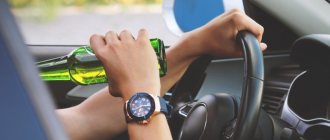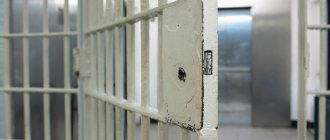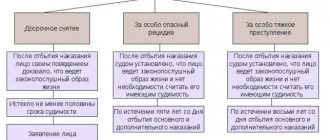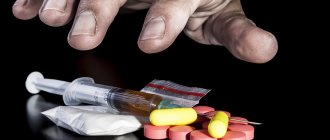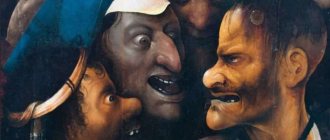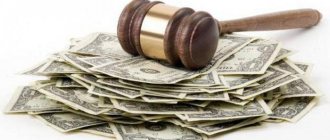An act such as hitting a pedestrian at a crosswalk is considered an extremely serious offense. In this case, the driver may fall under administrative or criminal liability. The final punishment is imposed in court and depends on the specific situation. The final verdict is influenced by the number and severity of injuries received by the victim. It is also mandatory to take into account factors that aggravate or, conversely, mitigate the guilt of the car owner.
Punishment for hitting a pedestrian at a pedestrian crossing
According to the traffic rules, a pedestrian crossing is an area of the roadway where priority is given to a person traveling on foot. A crosswalk accident is a traffic accident involving a moving vehicle (VV) and a pedestrian. Regardless of the cause of the collision, in an accident at a crossing, in virtually any circumstances, the driver of the vehicle is at fault (except for the situation when a citizen deliberately throws himself under the wheels). The legislation provides for the following types of liability depending on the severity of the damage caused to the pedestrian:
- civil;
- administrative;
- criminal
Since the measures applied to the violator can vary significantly, let’s take a closer look at what threatens a driver who hits a person at a pedestrian crossing.
Civil responsibility
This type of liability arises as a result of harm caused to the victim by a source of increased danger, according to Art. 1079 of the Civil Code (Civil Code of the Russian Federation),:
Legal entities and citizens whose activities involve an increased danger to others (use of vehicles, mechanisms... etc.) are obliged to compensate for damage caused by a source of increased danger, unless they prove that the damage arose due to force majeure or the intent of the victim.
Important : if the driver is not the culprit of the accident, he is still obliged to compensate the victim for the damage caused. At the same time, the punishment for hitting a pedestrian at a pedestrian crossing in 2022, in accordance with the provisions of Art. 1083 of the Civil Code of the Russian Federation, the amount of compensation may be canceled or reduced:
Damage caused by the intent of the victim is not subject to compensation. If the gross negligence of the victim himself contributed to the occurrence or increase of harm... the amount of compensation should be reduced.
Administrative responsibility
This type of liability is established by the Code of Administrative Offenses (CAO). Art. 12.24 provides for violation of traffic rules, as a result of which the victim’s health was harmed:
- light - a fine of 2.5–5 thousand rubles or deprivation of rights for 1–1.5 years;
- medium severity - a fine of 10–25 thousand rubles. or deprivation of rights for 1.5–2 years.
Mild harm to health corresponds to a short-term (up to 21 days) deterioration of health, moderate harm corresponds to a harmless but long-term (more than 21 days) health disorder.
Criminal liability
This is the most serious measure of liability, which is imposed when serious harm to the victim’s health is caused, including death. Punishments are established by Art. 264 of the Criminal Code (Criminal Code of the Russian Federation).
The Criminal Code of the Russian Federation shares responsibility for causing harm to the health of a victim by a driver who was sober and intoxicated at the time of the accident. In addition, it is taken into account whether the at-fault driver left the scene of the accident or not:
- if the guilty driver was sober and did not leave the scene of the accident, one of the following measures is applied (Part 1 of Article 264): restriction of freedom for up to 3 years;
- forced labor for up to 2 years;
- arrest up to 6 months;
- imprisonment for up to 2 years;
- forced labor for up to 5 years;
The Criminal Code of the Russian Federation provides for maximum liability for violation of traffic rules resulting in the death of the victim.
Registration of the incident
An inspection report is drawn up. In case of minor or moderate harm to health, the document is drawn up by a traffic police officer.
If a pedestrian has died or been seriously harmed, a specialized team (criminologist, investigator, automotive technician) is sent to the scene of the accident:
- examine traces, extract material evidence;
- the technician inspects the vehicle, recording the results in the protocol;
- They interview eyewitnesses of the incident and record all information in a document.
Then special automotive examinations are carried out (traceological, automotive technical). They are needed to correctly determine the course of an accident. Forensic medical examination to identify the degree of damage caused to health and/or the cause of death of the victim. Based on all actions, a procedural decision is made.
What punishment does a driver face if he hits a passerby to death?
If a pedestrian dies as a result of an accident, then the law provides for the most severe punishment for the at-fault driver. Art. 264 of the Criminal Code of the Russian Federation differentiates it depending on the circumstances.
If the driver was sober at the time of the collision with the pedestrian and did not leave the scene of the incident, then, according to Part 3 of Art. 264 of the Criminal Code of the Russian Federation, fatal collision with a pedestrian
... is punishable by forced labor for a term of up to four years ... or imprisonment for a term of up to five years.
A drunken culprit of an accident or one who left the place where it occurred, in accordance with Part 4 of Art. 264 of the Criminal Code of the Russian Federation
...is punishable by imprisonment for a term of five to twelve years with deprivation of the right to hold certain positions or engage in certain activities for a term of up to three years.
Liability becomes even more stringent if two or more people die as a result of the accident. The maximum punishment for a sober driver who did not run away from the scene of an accident (Part 5 of Article 264) is imprisonment up to 7 years, for a drunk driver or who left the scene of an accident - from 8 to 15 years. It is worth noting that the state of intoxication refers to the presence in the body not only of ethyl alcohol in a certain concentration, but also of narcotic, psychotropic or psychoactive substances.
Important : if the at-fault driver refuses a medical examination, then he is equated to persons in a state of intoxication (note 2 to Article 264 of the Criminal Code).
Road accidents caused by pedestrians
Accidents at crossings also occur due to the fault of pedestrians. In this case, mutual responsibility arises: the driver must compensate for the damage caused to the pedestrian, and he, in turn, must compensate for the damage caused to the vehicle. This is stated in paragraph 1 of Art. 1064 Civil Code of the Russian Federation:
Harm caused to the person or property of a citizen, as well as harm caused to the property of a legal entity, is subject to compensation in full by the person who caused the harm.
The first part also concerns cases in which drivers were injured. In such situations, liability for serious bodily injury in an accident rests with the at-fault pedestrian. Part 2 of the same article states that:
The person who caused the harm is released from compensation for harm if he proves that the harm was not caused through his fault.
The driver's liability if a pedestrian is at fault in an accident depends on the severity of the consequences of the accident.
Scope and legality of the claim for compensation for moral damage
The most difficult thing for a pedestrian to claim is compensation for moral damage.
Moral damage is directly related to physical and moral suffering caused by the incident.
If the victim suffered property damage and/or damage to his health, this is sufficient for the court to recognize the existence of moral damage.
The amount of compensation directly depends on the nature of the harm caused, the severity of the consequences of the accident for the victim, and the fault of the driver who caused the damage.
Moral damages can be recovered regardless of whether the pedestrian is at fault, since it is the driver who is driving the source of increased danger.
In administrative cases, victims can claim moral damages: for minor damage within 50 thousand rubles, with an average of up to 100 thousand rubles.
In criminal cases, the injured party has the right to claim an amount of up to 500 thousand rubles (if serious harm is caused) and up to 1 million rubles (if a pedestrian is deprived of life).
What to do if you hit a person
The driver's procedure for colliding with a pedestrian is as follows:
- stop the car and turn on the emergency lights;
- protect the victim, protect him from other vehicles;
- put up a warning triangle;
- call an ambulance and traffic police patrol;
- turn off the DVR recording (if available) so that a recording of the moment of the accident is preserved;
- provide first aid to the victim (if the driver does not have such skills, then it is better to wait for the doctors to arrive so as not to cause even more harm);
- wait for the arrival of the specified services and be present when the accident report is completed.
Important : the injured citizen must not be released; he may be in an inadequate state due to shock. Another option: a pedestrian who fled the scene of an accident after some time can file a statement with the police that the vehicle that hit him left the scene of the accident.
How much compensation may be required?
A driver guilty of hitting a pedestrian may be required to:
- Compensation for property damage (price of things, clothing and other valuables damaged in a collision).
- Compensation for damage caused to health.
- Compensation for damage caused by the death of a pedestrian (to relatives).
- Compensation for moral damage caused to a person due to his suffering and worries about the accident and injuries received.
- Compensation consists of three components: material, moral and ethical.
The last two categories are determined by the victim at his discretion. The court either satisfies the claims or lowers them if the amount is excessively high.
The culprit has the opportunity to reach an agreement with the injured pedestrian from the very beginning, compensating him for the damage. In this case, the victim has the right to ask for any amount. In response, the victim draws up a statement stating that there are no claims, thus precluding further proceedings.
Damage caused by insured vehicle owners is reimbursed by their insurance companies.
Hitting a pedestrian in reverse
When hitting a person at a crossing in reverse, the driver is definitely at fault, since, according to clause 8.12 of the traffic rules:
Reversing is prohibited at intersections and in places where turning around is prohibited.
In accordance with clause 8.11 of the Traffic Regulations:
U-turns are prohibited at pedestrian crossings...
Therefore, when someone hits a person with a car in reverse, then, depending on the severity of the consequences, the culprit will be subject to civil, administrative or criminal penalties.
Victim's rights
The victim has the right to apply to the courts with a claim against the driver. You can recover material and moral compensation:
- Moral damage refers to the emotional experiences and state of a person in such a situation in general.
- Material damage – money spent on treatment, lost profits, lost wages.
A claim can be filed for any severity of the accident at the discretion of the victim. The court independently decides whether to satisfy the claim.
Causes and statistics of accidents with pedestrians
Most often, drivers are responsible for accidents at pedestrian crossings. This happens for the following reasons:
- over speed;
- traffic violation;
- poor visibility at an unregulated crossing;
- lack of driving skills;
- a sudden acute attack of any disease, for example, a heart attack;
- severe fatigue, inadequate reaction to the situation on the road;
- vehicle malfunction;
- difficult road conditions, for example, ice.
An accident caused by a pedestrian can be caused by:
- non-compliance with traffic rules;
- alcohol or drug intoxication;
- a sharp deterioration in health.
The factor of chance is present in the case of guilt of both the driver and the pedestrian. But according to statistics, the proportion of such accidents is much smaller than accidents caused by other reasons.
Here are the statistics of accidents at pedestrian crossings involving pedestrians according to the State Traffic Safety Inspectorate of the Russian Federation for 2021 (data taken from the official website of the State Traffic Safety Inspectorate):
- number of accidents - 19,591, of which: due to the fault of drivers - 16,871;
- due to the fault of pedestrians - 1733;
For comparison, the same indicators for 2021:
- number of accidents - 18,498, of which: due to the fault of drivers - 15,573;
- due to the fault of people on foot - 1639;
The trend is disappointing: the number of accidents at pedestrian crossings is showing an increase. The ratio of at-fault drivers to at-fault pedestrians remains the same: approximately 10 to 1.
What do you need to contact an insurance company for compulsory motor liability insurance?
This step is accompanied by the collection of documents that speed up the process of compensation for damage caused to a pedestrian in an accident. You must provide the insurance company with:
- copy of passport/official document;
- Bank details;
- a copy of the driver’s fault report issued by the traffic police;
- medical certificates and other documents indicating the nature and severity of injuries;
- a certificate from an ambulance that responded to a call at the time of an accident at a pedestrian crossing;
- power of attorney (if the applicant is not present in person).
It is advisable to file supporting papers in the folder that will help resolve controversial issues faster. In addition, you must fill out an Application in the established form and attach it to the main package. In order to avoid unlawful refusal and delay in cash payments, you should keep copies of all papers.
Applications for compensation for personal injury after an accident can be found here.
Arbitrage practice
Accidents at crossings involving citizens traveling on foot occur every day in different regions of the country. Judicial practice in such cases is very diverse; for illustration, let us consider two illustrative and frequently encountered examples.
Gr. Ivanov, driving his car along the street, did not notice a man at an unregulated, unlit pedestrian crossing, but managed to brake at the very last moment. The victim fell and suffered a bruise to his arm. Traffic police officers and an ambulance were called. At the court hearing, Mr. Ivanov was charged, according to Art. 12.24 of the Code of Administrative Offenses, the penalty is a fine in the amount of 3,000 rubles and compensation was awarded to the injured pedestrian in the amount of 2,000 rubles.
Gr. Petrov, being drunk at the wheel of his car, drove through a red light and hit a citizen. Sidorov at a pedestrian crossing. Witnesses to the incident called an ambulance and the traffic police. The injured gr. Sidorov died on the way to the hospital. After considering all the circumstances of the accident, the court sentenced Mr. Petrov according to Part 4 of Art. 264 of the Criminal Code of the Russian Federation to 5 years in prison.
Controversial situations of this traffic violation
Ways to avoid punishment in such cases:
- There are known incidents when a driver demanded financial compensation from a pedestrian who violated the rules. In a situation where the pedestrian also caused harm to the driver or his vehicle, they can agree on a mutual waiver of claims. In this case, traffic police officers will record this in the protocol.
- If video materials prove that a pedestrian deliberately created a dangerous emergency situation, this can serve as significant evidence in favor of the driver.
- If the cause of the accident was another offense. For example, during a fight, one person pushed another under the wheels. In this case, the driver will receive priority among the participants in the accident, and the attacker will bear full responsibility.
- If the accident was caused by a sudden malfunction of the vehicle. In this case, a member of the special group (car mechanic) will testify to the fact of the breakdown and indicate this in the protocol.
- In case of sudden deterioration in condition or health. For example, the driver lost consciousness. It is important to understand that taking drugs that slow down the reaction, violating the doctor’s recommendations, after operations that can reduce the reaction rate, will serve as aggravating circumstances.
